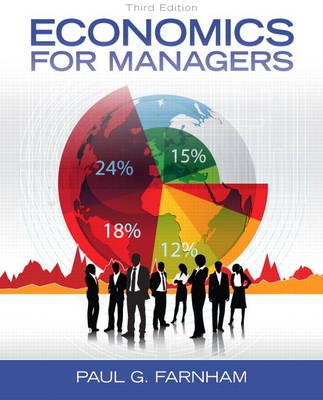
THE ECONOMIC ENVIRONMENT OF BUSINESS
 |
| Spring 2017 |
 |
Graduate (S) Business Administration 509 THE ECONOMIC ENVIRONMENT OF BUSINESS |
|
|
|
| | HOME | SYLLABUS | CALENDAR | ASSIGNMENTS | ABOUT PROF. GIN | |
|
F. Market Structure . . . . 1. Perfect competition a. Characteristics (1) Large number of firms (2) Undifferentiated (homogeneous) product - products sold by all firms are identical (3) Easy to enter market - no barriers to entry (4) Complete information available to participants Ex. - Agriculture, financial markets, trucking .
. b. Short-run equilibrium (1) Firm's demand curve
. . . . . . . . . . (2) Profit maximization
. . . . . . . . . . c. Long-run equilibrium
(1) Short-run profits
. . . . . . . . . . (2) Short-run losses
. . . . . . . . . . 2. Monopoly a. Characteristics (1) One firm (2) Unique product with no close substitutes (3) Entry is blocked - many barriers to entry (4) Some information protected by patents, copyrights, and trade secrets Ex. - Public utilities .
. b. Profit maximization . . . . . . . . . . c. Comparison with perfect competition . . . . . . . . . . d. Sources of market power (barriers to entry) (1) Economies of scale . . . . . . . . . . (2) Barriers created by government (a) Licenses
(b) Patents and copyrights
(3) Input barriers
Ex. - Alcoa, DeBeers, Ocean Spray, Ecke family . (4) Brand loyalties
Ex. - . (5) Consumer lock-in and switching costs
. (a) Contractual commitment
. (b) Durable purchases
. (c) Brand-specific training
Ex. - Microsoft Word . (d) Information and databases
. (e) Specialized suppliers
Ex. - Military contractors . (f) Search costs
. (g) Loyalty programs
Ex. - Frequent flyer programs . (6) Network externalities
Ex. - Microsoft Windows, e-Bay, Facebook, LinkedIn . e. Measures of market power (1) Lerner Index . . . . . . (2) Cross-price elasticity of demand . . . . . . (3) Concentration ratios
Ex. - . . . . . .
. (4) Herfindahl-Hirschman Index (HHI)
. . . . . .
. . . . . . f. Anti-trust issues
. (1) Antitrust laws and enforcement (a) Sherman Act (1890)
. (b) Clayton Act (1914)
. (c) Federal Trade Commission Act (1914)
. (2) Department of Justice and FTC guidelines
. (a) Issues i) Definition of relevant market Ex. - Coca-Cola and Dr. Pepper, cereal ii) Level of seller competition in market iii) Possibility that merging firm might be able to unilaterally affect price and output iv) Nature and extent of entry into market v) Characteristics of market structure that would influence coordination among sellers vi) Extent to which cost savings and efficiencies could offset increase in market power . (b) Merger standards i) Post-merger HHI below 1500
. . . . ii) Post-merger HHI between 1500 and 2500
. . . . iii) Post-merger HHI greater than 2500
. . . . 3. Monopolistic competition a. Characteristics (1) Large number of firms in product group (2) Products are differentiated (3) Entry and exit is relatively easy (4) Relatively good information available Ex. - Retail, restaurants, services .
. b. Product differentiation
(1) Methods (a) Brand names
(b) Packaging (c) Product design (d) Quality (e) Service or services . (2) Objective of product differentiation . . . . . . . . . . c. Short-run and long-run equilibrium . . . . . . . . . . 4. Oligopoly a. Characteristics (1) Small number of firms (2) Homogeneous or differentiated product (3) Entry is difficult - many barriers to entry (4) Some information available, but limited Ex. - Steel, oil, autos, soft drinks, gasoline .
. b. Cooperative oligopoly models (1) Cartels
Ex. - OPEC
- Cartel can raise market price without inducing significant competition from nonmembers - Punishment for forming cartel is low relative to expected gains - Costs of establishing and enforcing the agreement are low relative to gains . (2) Tacit collusion
. (a) Practices i) Uniform prices ii) Penalty for price discounts iii) Advance notice of price changes iv) Information exchanges v) Swaps and exchanges . (b) Price leadership
|